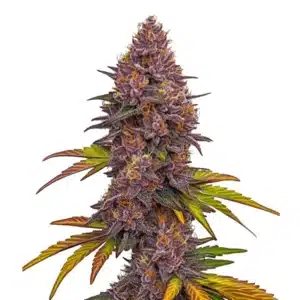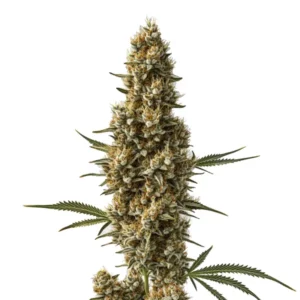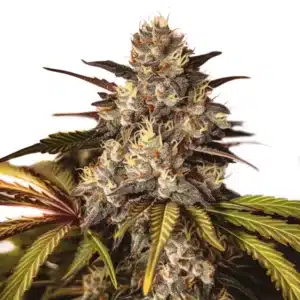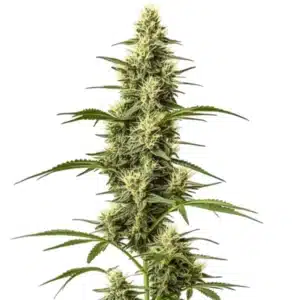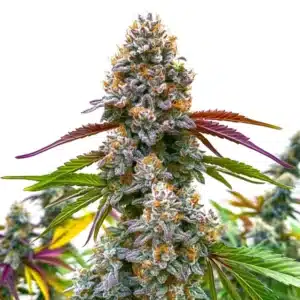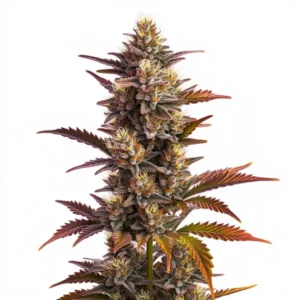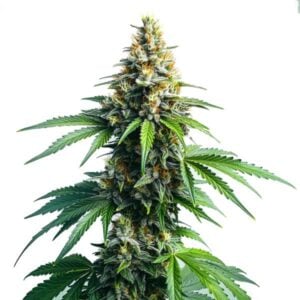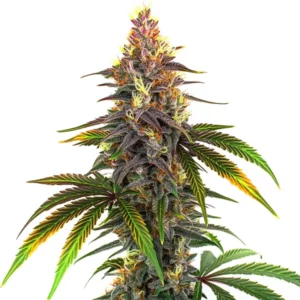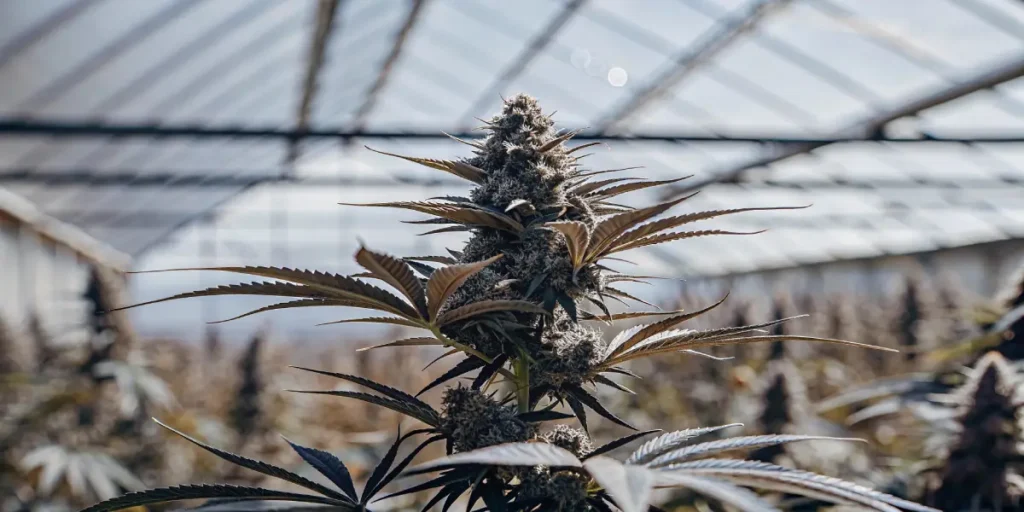
Plant Hormones and Cannabis Yield
Knowing how plant hormones influence cannabis yield can transform your approach to growing. These tiny chemical messengers can make a big difference in your harvest. Whether you’re a first-time seed buyer or a seasoned grower, knowing the basics of plant hormones can elevate your cannabis cultivation experience.
Hormones are like the conductors of a plant’s orchestra, guiding growth, development, and response to the environment. By tapping into this natural process, you can optimize your cannabis yield. Imagine getting the most out of your favorite strains like the potent Grizzly Purple Kush or the versatile Critical Daddy Purple.
Recommended Strains
Grizzly Purple Auto
-
THC: 9% - 13%
-
Type of seed: Autoflowering
-
Phenotype: 20% Sativa / 80% Indica
-
Flavor: Citrus, Fruity, Lemon
-
Life cycle of: 8 - 10 weeks
Gorilla Purple Auto
-
THC: 20% - 24%
-
Type of seed: Autoflowering
-
Phenotype: 50% Sativa / 50% Indica
-
Flavor: Citrus, Earthy, Sweet
-
Life cycle of: 9 - 11 weeks
Plant hormones influence cannabis yield by affecting various stages of plant growth. They help with everything from seed germination to flowering. Each type of hormone has a specific role and can be manipulated to maximize your plant’s potential. Let’s dive deeper into how you can use these hormones to your advantage.
Gibberellins Role in Cannabis Growth
Gibberellins are one group of plant hormones that play a crucial role in stem elongation and seed germination. These hormones encourage the plant to grow taller and can be particularly useful when you’re aiming for higher plants with more nodes for bud production. Taller plants mean more room for branches and, eventually, more buds.
Using gibberellins can be a game-changer if you’re growing a strain like Blue Dream, known for its impressive height and yield. By applying gibberellins, you might see an increase in stem length and overall plant size, resulting in a larger harvest when done correctly.
Knowing the gibberellins role in cannabis growth helps growers achieve the desired plant structure. These hormones can be particularly beneficial in indoor growing setups where maximizing vertical space is essential. By carefully managing gibberellin levels, growers can ensure their plants reach optimal height without compromising their stability.
Besides to promoting vertical growth, gibberellins can also enhance internodal spacing, allowing for better light penetration and air circulation. This aspect of cannabis yield optimization with hormones ensures that the lower parts of the plant receive adequate resources, supporting overall health and productivity.
Practical Application of Gibberellins
Applying gibberellins can be done through foliar sprays or soil additives. It’s essential to follow the manufacturer’s guidelines to avoid overuse, which can lead to excessively tall plants that may become unstable.
Many growers find that a small dose during the vegetative stage is enough to see the benefits. Keep an eye on your plants and adjust as needed, ensuring you strike the right balance for optimal growth.
For those new to using gibberellins, starting with a controlled test on a small batch of plants can provide valuable insights. Observing how these test plants react will guide you in fine-tuning the application process for your entire crop. This approach minimizes risks and maximizes benefits.
Combining gibberellins with other growth strategies, like topping or low-stress training, can enhance your plants’ ability to support heavier yields without sacrificing stability. This combination allows you to maximize cannabis yield optimization with hormones while maintaining healthy plants.
Promos & Deals
Cytokinin Effects on Cannabis Yield
Cytokinins are another vital group of plant hormones. They primarily promote cell division and influence the growth of lateral buds, leading to bushier plants. This characteristic can be especially beneficial if you’re growing indoors and need to manage plant height.
By applying cytokinins, you can encourage your cannabis plants to grow wider rather than taller, ideal for maximizing space and light exposure. This approach can be particularly effective with strains like Grizzly Purple Kush, which naturally develops dense, bushy foliage.
The cytokinin effects on cannabis yield are profound, especially for growers aiming for a compact, bushy plant structure. This growth form not only optimizes space but also enhances light distribution across the plant’s surface, leading to more efficient photosynthesis and increased yield.
Moreover, by promoting lateral growth, cytokinins help in developing a robust framework that can support a heavier bud load. This aspect is crucial for cannabis plants as it prevents the plants from toppling over, ensuring a stable and productive grow environment.

How to Use Cytokinins
The application of cytokinins is straightforward. Many growers use a foliar spray, which allows the hormones to be absorbed directly through the leaves. This method can enhance the hormone’s effectiveness and ensure it reaches the plant’s growth points quickly.
Frequency and concentration are key. Too much can lead to stunted growth or overly dense foliage, while too little might not produce noticeable results. Start with a mild solution and observe how your plants respond before increasing the dosage.
When utilizing cytokinins, it’s important to integrate them into a well-rounded growing strategy. This includes maintaining optimal light levels, nutrient balance, and environmental conditions to fully harness the potential of these hormones. This comprehensive approach ensures the desired cytokinin effects on cannabis yield are achieved.
Additionally, growers might explore the timing of cytokinin application, aligning it with specific growth stages to maximize benefits. Experimenting with cytokinin timing allows for tailored application strategies that can be adjusted based on the unique needs of different cannabis strains.
Auxins Impact on Cannabis Production
Auxins are another essential group of plant hormones, primarily involved in root development and growth regulation. They play a pivotal role in cell elongation, helping roots grow deeper and stronger, which is crucial for nutrient uptake.
Having a robust root system can significantly impact cannabis production. A well-developed root system supports a healthier plant, leading to increased yield. Auxins can be particularly useful when growing strains like Critical Daddy Purple, known for its vigorous growth and resilience.
The auxins impact on cannabis production extends beyond root development. These hormones also play a key role in apical dominance, where the plant prioritizes upward growth. Knowing this mechanism allows growers to manipulate plant structure through techniques like pruning and training.
Incorporating auxins into your cultivation practices enables more effective root zone management. By ensuring roots are healthy and expansive, growers can achieve better nutrient absorption and water uptake, directly contributing to robust plant growth and enhanced yield potential.
Applying Auxins Effectively
Auxins can be applied through rooting gels or powders, especially during the cloning process. This application ensures that cuttings develop strong roots quickly, giving them a better start in life.
When used in conjunction with other hormones, auxins can help create a balanced growth environment. This balance allows your cannabis plants to focus on both root and shoot development, leading to a more productive harvest.
For effective auxin application, it’s critical to maintain precise control over concentration levels. Overuse can disrupt hormone balance and stunt growth, while underuse may not provide the desired benefits. Careful monitoring and adjustment are necessary for optimal outcomes.
Furthermore, integrating auxins into a holistic growth plan that includes proper soil health, watering practices, and nutrient management will enhance their effectiveness. This comprehensive strategy supports the auxins impact on cannabis production by fostering a robust and balanced growth environment.
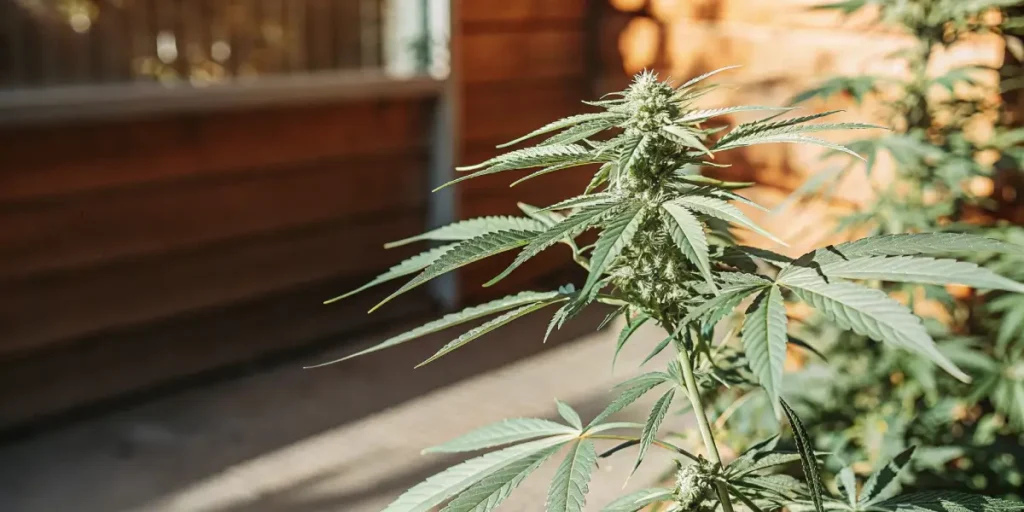
FAQs on Plant Hormones and Cannabis Yield
What are the main plant hormones that influence cannabis yield?
The main plant hormones that influence cannabis yield include gibberellins, cytokinins, and auxins. Each of these hormones plays a specific role in the plant’s growth and development processes. Gibberellins promote stem elongation, cytokinins enhance lateral bud growth, and auxins support root development.
Knowing the functions of these hormones allows you to manipulate plant growth to your advantage. By using these hormones strategically, you can optimize your cannabis yield and improve the overall health of your plants.
Strategically applying these hormones at the right growth stages can lead to significant improvements in both yield and quality. For instance, using gibberellins during early vegetative growth can enhance stem elongation, while cytokinins might be more beneficial during later stages to promote bud development.
Incorporating plant hormones into your cultivation routine requires careful consideration of each hormone’s function and impact. By aligning hormone use with your specific cultivation goals, you can achieve a more efficient and productive cannabis growing operation.
How can gibberellins be used to optimize cannabis yield?
Gibberellins can be used to optimize cannabis yield by promoting stem elongation and enhancing plant height. This growth can be particularly advantageous for strains that thrive with more vertical space, such as Blue Dream. By increasing plant height, you create more nodes for potential bud sites.
However, it’s essential to use gibberellins in moderation. Excessive application can result in overly tall plants that may require additional support. A balanced approach will help you achieve the desired yield without compromising plant stability.
By knowing the specific gibberellins role in cannabis growth, growers can tailor their application strategies to maximize benefits. This might include adjusting concentration levels or timing applications to coincide with specific growth phases.
Collaborating gibberellins with other cultural practices like training and pruning can further enhance their effectiveness. This integrated approach allows for precise control over plant architecture, leading to improved yield outcomes and healthier plants.
What practical steps can I take to apply cytokinins for better yield?
To apply cytokinins for better yield, consider using a foliar spray during the vegetative stage. This method allows the hormones to be absorbed quickly and efficiently through the leaves, promoting bushier plant growth. This approach is ideal for managing plant size and maximizing light exposure.
Start with a low concentration and observe how your plants respond. Gradually increase the dosage if needed, always keeping an eye on plant health. Combining cytokinin application with good pruning practices can further enhance your yield potential.
Integrating cytokinins into a broader cannabis yield optimization with hormones strategy can amplify their effects. This might involve scheduling cytokinin applications to align with other hormonal treatments or nutrient regimens.
Additionally, experimenting with different cytokinin products and application techniques can provide insights into what works best for specific strains. This experimentation is crucial for fine-tuning your approach and achieving the best possible yield outcomes.
How do auxins contribute to cannabis production?
Auxins contribute to cannabis production by promoting robust root development. A strong root system is essential for nutrient uptake and overall plant health. This foundation supports better growth and can lead to a more substantial yield.
Using auxins during the cloning process helps ensure that cuttings establish strong roots quickly. Additionally, maintaining a balanced hormone environment will support both root and shoot growth, optimizing your cannabis production.
Fostering a deep knowing of auxins impact on cannabis production can guide growers in maximizing root health and overall plant vigor. This knowledge is especially useful when dealing with challenging growing conditions or soil types.
Implementing auxins as part of a comprehensive cultivation strategy that includes proper irrigation, soil management, and environmental control ensures that the benefits of auxins are fully realized. This holistic approach is key to achieving consistent and reliable yield improvements.
Are there any risks associated with using plant hormones on cannabis?
While plant hormones can significantly enhance cannabis yield, there are risks associated with their misuse. Overapplication can lead to hormonal imbalances, resulting in issues like stunted growth, poor bud development, or unstable plants.
It’s crucial to follow recommended guidelines and adjust based on your plant’s specific needs. Observing your plants closely and making informed decisions will help mitigate these risks and lead to a successful harvest.
By knowing the nuances of plant hormones influence cannabis yield, growers can avoid common pitfalls and optimize their cultivation practices. This knowledge helps in striking the right balance between hormone use and overall plant health.
Continuous monitoring and adaptation of hormone application strategies are essential for minimizing risks. By staying informed and responsive to plant feedback, growers can harness the full potential of plant hormones while maintaining a stable and productive growing environment.

